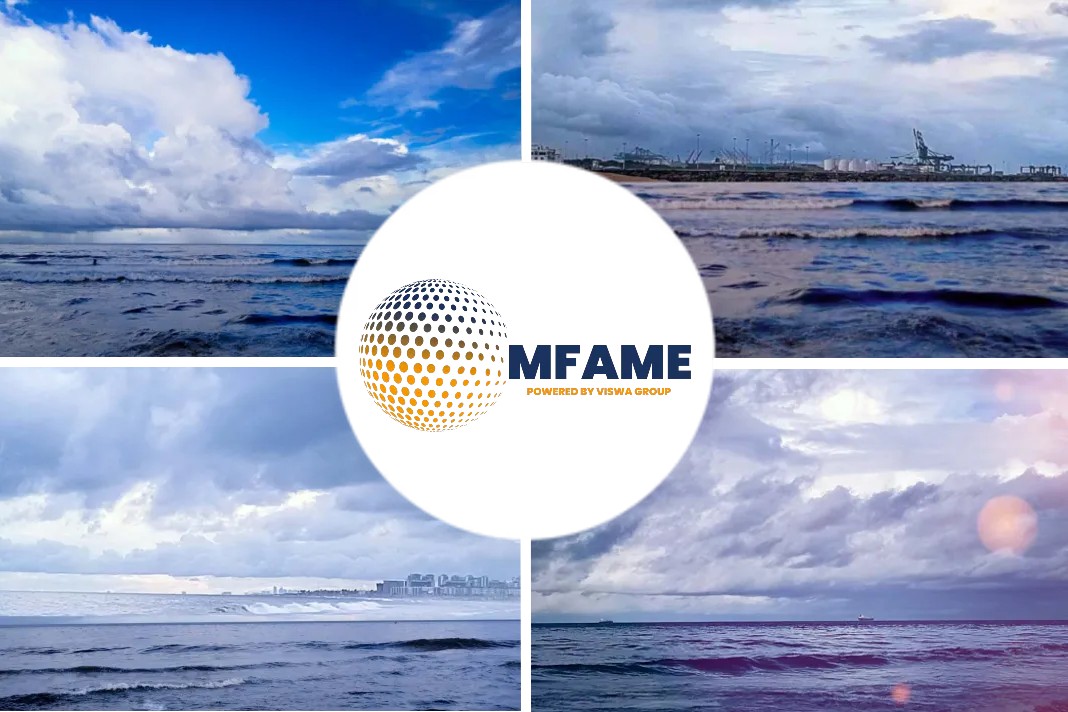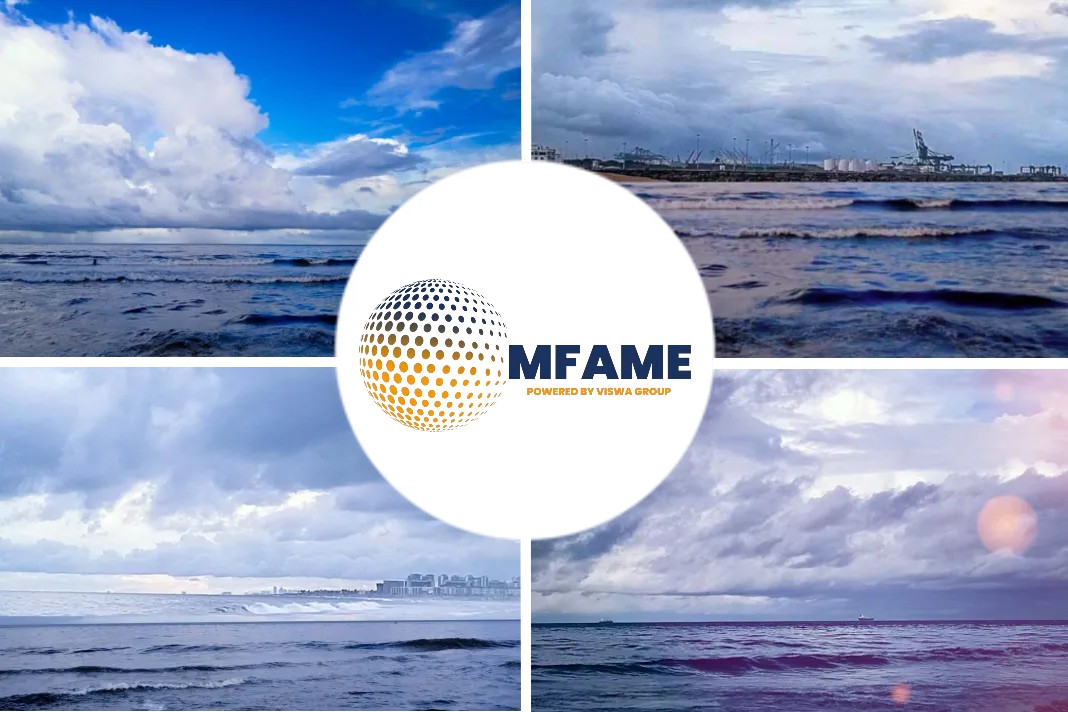The NTSB investigation report briefs about the over-pressurization of the number 3 port and starboard cargo tanks that occurred on the Marshall Islands-flagged chemical tanker Fairchem Filly in May 2019.
Here we are chronicling that investigation report.
Summary
On May 30, 2019, about 0750 local time, the Marshall Islands-flagged chemical tanker Fairchem Filly, with a crew of 22, experienced an overpressurization of the number 3 port and starboard cargo tanks while discharging liquid hexene at Vopak Terminal in Deer Park, Texas.
The overpressurization resulted in damage to the number 3 port cargo tank and the tank top (deck). All cargo was contained on board the double-hulled vessel, with no pollution or injuries reported. Damage to the Fairchem Filly was estimated at $750,000, and the contaminated cargo was an estimated $100,000 loss.
The incident
On the morning of the accident, the chief officer, third officer, and pumpman on the Fairchem Filly took part in the cargo operation. The terminal crew consisted of three people: a shift supervisor, a dock supervisor, and a dockman.
The tanker’s number 1 starboard (1S), number 2 starboard (2S), and number 3 port and starboard (3P and 3S, respectively) cargo tanks contained product and were all scheduled to be discharged to the terminal.
- Tank 1S was approximately 38% full and contained 65,171 gallons of methyl isobutyl ketone (MIBK) in a liquid state.
- Tanks 2S, 3P, and 3S were each 93% full and, combined, contained about 914,563 gallons of liquid hexene.
- All other cargo tanks aboard the Fairchem Filly were empty.
Hexene, unlike MBIK, tends to absorb oxygen, which negatively affects its purity, and thus needs to be stored and transferred under a “blanket” or “pad” of inert gas.
The Fairchem Filly utilized nitrogen to maintain a blanket of 2 pounds per square inch (psi) (13.8 kilopascal [kPA]) over the product while stored on board the vessel and during the transfer of the hexene to the terminal. During typical transfer operations, the remaining tank volume above the cargo increases as the liquid hexene is pumped off the vessel, requiring additional nitrogen to fill the space.
- Vopak supplied the Fairchem Filly with nitrogen for the transfer.
- Vopak received its nitrogen from a shoreside distribution piping network, utilizing a pressure-reducing station to reduce the incoming nitrogen from 170 psi to 90 psi (11.7–6.2 bar), which would then be distributed to the docks and used by vessels for purging and blanketing tanks.
- The connection between a ship and the terminal was normally accomplished via either a 2- or 4-inch shore-supplied hose.
At 0430, the dock supervisor, Vopak’s Person in Charge (PIC) for the transfer, boarded the Fairchem Filly and met with the chief officer in the cargo control room.
- Discussed the planned discharge operation and
- completed the vessel’s “Ship/Shore Safety Checklist” and the terminal’s “Declaration of Inspection” (the paperwork indicated that nitrogen blanketing would be utilized for the hexene discharge).
Communication
For communications, the Vopak PIC provided the chief officer with a UHF radio that belonged to the terminal, set to channel 4, which they established would be the primary means of communication between the chief officer and the Vopak PIC throughout the discharge operation.
They agreed that the secondary means of communication would be verbal communication at the cargo manifold. The ship’s crew used a separate ship’s radio (and channel) when communicating on board.
Once the discussion and paperwork were completed, the Vopak PIC disembarked the vessel.
Hose connections
Utilizing the shoreside crane, Vopak’s dockman and the Fairchem Filly’s pumpman began making hose connections.
The ship’s pumpman was assigned to operate the cargo manifold valves on the ship, including the nitrogen supply valve, and the Vopak PIC was responsible for the shore valves.
All hoses were connected by 0540, and shortly afterward, the terminal completed a personnel shift change.
- The relieving dockman assumed the role of Vopak PIC from the dock supervisor and completed a handover with his counterpart.
- There was no requirement to inform the vessel of the shift change at that time, and no attempt was made.
- Over the next hour, terminal employees on the dock made physical checks of the cargo hoses and communicated with the terminal control room to verify that the terminal’s piping system was lined up correctly.
At 0705, after communicating with the terminal, the Fairchem Filly’s chief officer started the 3P and 3S cargo pumps from the cargo control room to begin discharging hexene to the terminal. At 0738, the vessel’s crew started the cargo pump for 1S, and the discharge of MIBK commenced.
About the same time, the low inert gas pressure alarms for both the 3P and 3S cargo tanks sounded in the cargo control room, where the chief officer was stationed.
These alarms indicated that the tanks’ pressure fell below the low setting of 0.73 psi (5 kPa) and the nitrogen blanket was being depleted.
Unsuccessful contact attempts
- The chief officer made numerous unsuccessful attempts to contact the Vopak PIC via radio from the vessel’s cargo control room to request the status of the shore-supplied nitrogen.
- No attempts were made to verbally communicate from the ship’s manifold (by the pumpman) with the Vopak PIC (dockman).
- Using the ship’s radio, the chief officer radioed the ship’s pumpman, who was stationed by the vessel’s nitrogen control valve.
- In an effort to increase nitrogen flow and pressure, the chief officer instructed the pumpman to open the ship’s nitrogen valve, which had been closed.
- Chief officer, unaware of change in tank pressure, instructed the pumpman to fully open the ship’s nitrogen valve, making the ship entirely dependent on the terminal’s valve to regulate the flow of nitrogen.
- At this time, the chief officer did not know whether the terminal’s nitrogen valve was open, and if open, what percentage.
- About the same time, the terminal’s CCTV footage showed the dockman exiting the dock break shack, which was located at the same end of the ship dock as the shore nitrogen supply valve, moving off camera to an unknown location, and then returning to the shack 3 minutes later.
Registered an “ERROR” alarm
- At 0748, just 10 minutes after the 3P and 3S low-pressure alarms sounded, the same tanks registered an “ERROR” alarm, indicating a pressure of over 3.2 psi (22 kPa).
- About the same time, both the 3P and 3S cargo tanks pressure relief valves, which were set to open at 2.9 psi (20 kPa), opened.
- Crewmember stated that there was “so much noise” coming from the area where the valves were located. Crew also stated that the entire vessel “surged.”
- Ballast water began flowing through the number 3 port wing ballast tank vent and down onto the deck.
- At 0749, the ship’s crew turned off the cargo pumps for both the hexene and MIBK and responded to prevent the accumulating ballast water from spilling over the side of the vessel.
Communication re-established
- After several minutes, communication was re-established between the ship’s chief officer and the Vopak PIC (dockman) via radio.
- The chief officer informed the Vopak PIC that the vessel had experienced an overpressurization of its 3P and 3S cargo tanks and that the 3P cargo tank had ruptured, releasing hexene into the adjacent ballast tank.
- Both the terminal and the vessel closed their respective valves, and cargo transfer operations ceased.
Pressure indicators
In addition to individual cargo tank pressure indicators in the cargo control room, the Fairchem Filly was equipped with an independent cargo vapor pressure-monitoring alarm and recording system, which automatically recorded and stored tank pressure data. After the accident, the system data showed a highest recorded pressure of 15.8 psi (109 kPa) in the 3P and 3S cargo tanks.
Probable Cause
The National Transportation Safety Board determines that the probable cause of the overpressurization and rupture of the 3P cargo tank aboard the Fairchem Filly during offloading was the vessel and terminal personnel involved not following policies and procedures related to cargo discharge and nitrogen-blanketing operations.
Contributing to the casualty was the lack of effective communication between the vessel and terminal personnel and the decision of the vessel’s PIC to continue discharge operations after being unable to communicate with the terminal.
Did you subscribe to our daily newsletter?
It’s Free! Click here to Subscribe!
Source: NTSB

























